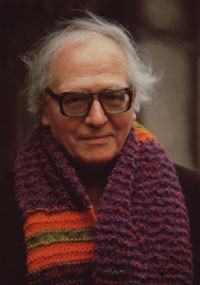Olivier Messiaen Biography - A Very Quick Guide
Olivier Messiaen (December 10, 1908–April 27, 1992) was a French composer, organist, and ornithologist.
Biography
Messiaen was born in Avignon into a literary family: his mother was the poet Cécile Sauvage, while his father was a translator who worked on an edition of Shakespeare in French. He began composing at a young age, and at the age of eleven, entered the Paris Conservatoire, where he had a traditional music education under Marcel Dupré and Paul Dukas among others.
He secured a post as organist of La Sainte Trinité church, Paris, in 1930. He retained this position into his eighties, and the music he composed for the organ throughout his life was informed by his interest in theological subjects.
In 1939, with the outbreak of World War II, he was called up for military service. He was captured by the Germans, and in 1941 wrote one of his most famous pieces, the Quatuor pour la fin du temps as a prisoner of war.
Later the same year, he was released, and in 1942 took up a post as professor of harmony at the Paris Conservatoire (he became composition professor in 1966). He also gave informal lessons to young avant garde composers, including Pierre Boulez and Karlheinz Stockhausen. It was through these that he met his second wife, Yvonne Loriod, who was to become a champion of his work as a pianist.
He went on to teach in many places abroad, including in the summer school courses at Darmstadt.
Music
Messiaen's musical style is typically a mix of extended, but essentially tonal, harmony with often complex rhythms and structures. He frequently used what he termed modes of limited transposition, which he formulated in conjunction with a mathematician friend, and are not related to church modes. He was also interested in medieval and Indian rhythms. During the early 1950s, he became interested in dodecaphony, and is considered to be a pioneer in the field of serialism, a method to which he introduced his pupil Pierre Boulez. His music is rife with a variety of idiosyncratic sound-structures that he dubbed 'special chords' (accords speciaux). His sheet music sometimes contains indications of particular colors; Messiaen experienced a condition known as synaesthesia that caused him to see colors whenever he heard music.
Many of Messiaen's works are concerned with the Roman Catholic faith (for example Vingt regards sur l'enfant Jésus), but he also drew inspiration from Hinduism; his Turangalîla Symphony takes its name from two Sanskrit words with manifold meanings, including 'time', 'play' and 'love song'.
Messiaen was also influenced by bird song, often walking in the woods with manuscript paper and transcribing the songs he heard. His books of piano pieces, Catalogue d'oiseaux, and his orchestral work, Oiseaux exotiques, are both based on bird song. All of his works composed after 1955 include fragments of birdsong.
Messiaen was a pioneer in the use of new instrumental forces. His works introduced the Gamelan-like sound of a large tuned percussion section into European music. He was also a champion of the Ondes Martenot, of which his sister-in-law, Jeanne Loriod, was a leading exponent.
